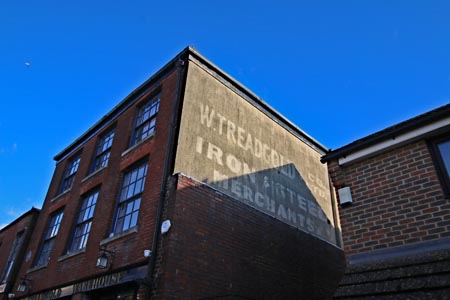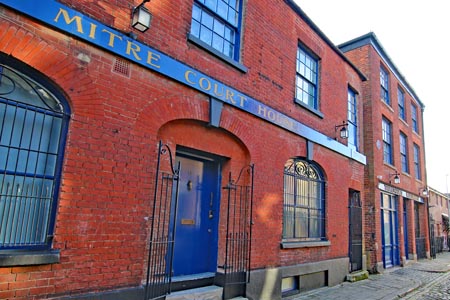Landmark Portsmouth buildings
Although the City of Portsmouth lost many of it's greatest building due to air raids and bombing during The Blitz as well as some to over zealous town planning, there are still some great buildings to be seen around the city if you know where to look, some historic and some modern. We have gathered together a collection of these buildings here. We hope that you agree with our choices, architectural opinions are of course a matter of personal opinion.
Some other important Portsmouth buildings are already covered elsewhere on this site such as St Thomas' Cathedral and Portsmouth Guildhall so are not included here. The long demolished Tricorn Centre can be found here.
If you think we have missed an important building that you love or admire, then please let us know at info@welcometoportsmouth.co.uk and we will check it out.
Charter House

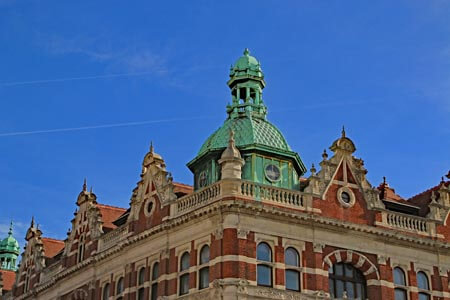
Charter House on Lord Montgomery Way in the heart of Portsmouth city centre was built for the Pearl Life Assurance Company in 1899 and is a Grade II listed building.
It is an imposing building constructed from red brick and Portland Stone with many intricate stone carvings, it was designed by Charles W Bevis, a Fellow of the Royal Institute of British Architects (FRIBA), a Portsmouth based architect.
Charter House was originally designed to house the offices of the Pearl Assurance Company, other offices, four shops on the ground floor as well as a private hotel. Shops still occupy the units at the ground floor level today, whilst the upper levels are now residential flats and apartments.
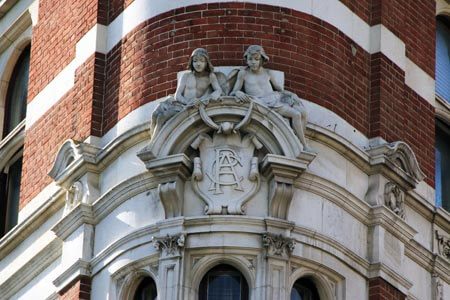
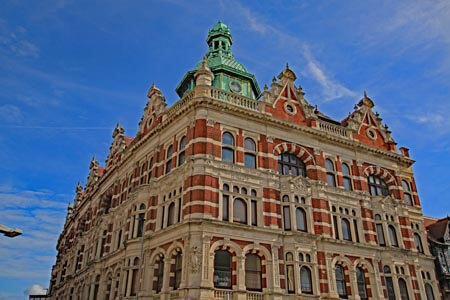
Eastney Barracks
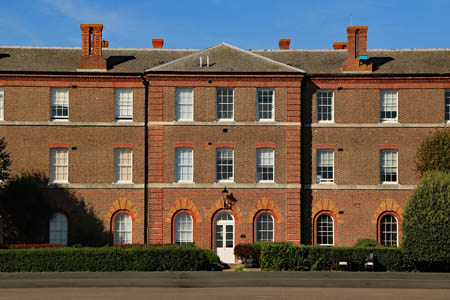
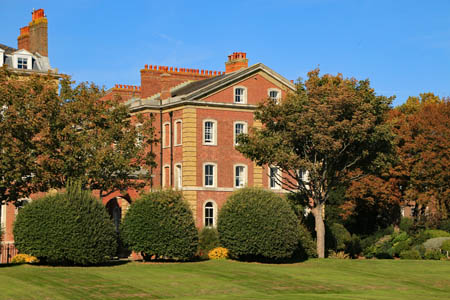
The construction of Eastney Barracks, designed by William Scamp (assistant director, Admiralty Works Department), for the Royal Marines Artillery Division began in 1862. Prior to being housed at Eastney the Royal Marines Artillery had separate companies based in Plymouth, Chatham, Woolwich and Portsmouth, the Portsmouth Division being based at Gunwharf and Clarence Barracks in Old Portsmouth.
Constructed from flint, red brick, and ashlar, Eastney Barracks is a Grade II listed building, following it's closure in 1995 the buildings were redeveloped into residential homes.
Over the years additions and improvements were made, Eastney swimming pool was built in 1904, St Andrews church was built in 1905 and the promenade road, now the seafront road was built in 1921.

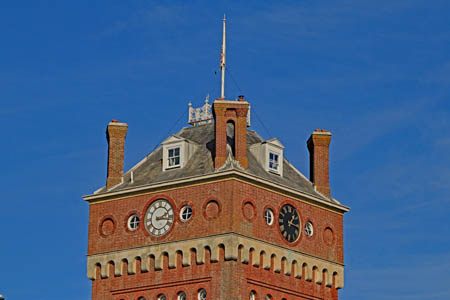
Mildam House

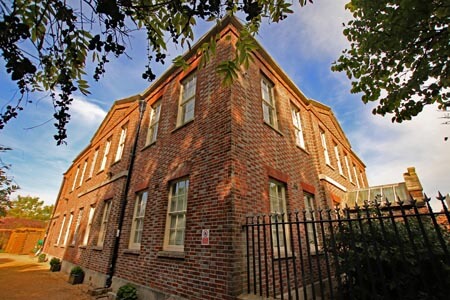
Mildam House on Burnaby Road in Portsea was originally part of the Mildam Barracks, a military complex built in
1846 when the mill pond sited there was reduced in size and land reclaimed.
It's orginal purpose was as a barracks and offices for the Royal Engineers a corps of the British Army. An inscription
RE Office, referring to the Royal Engineers can be seen above the entrance. By 1846 other barracks had been added to the
site to house soldiers, there were also workshops and stores used by the engineers. The Royal Engineers based here were
responsible for all building works and for upkeep of the local fortifications.
During the First World War the Tyne Electrical Engineers telephone section were based at Mildam and were responsible
for the military telephone system for the Southern Coast Defences.
Following the Second World War Second World War the barracks continued to be home to military units such as the Weapons
Systems Tuning Group. The site was decommissioned in 1977 and although most of the buildings were bought by Portsmouth
Polytechnic, now the University of Portsmouth, Mildam House itself was purchased by Portsmouth City Council and is
now the Portsmouth Register Office.
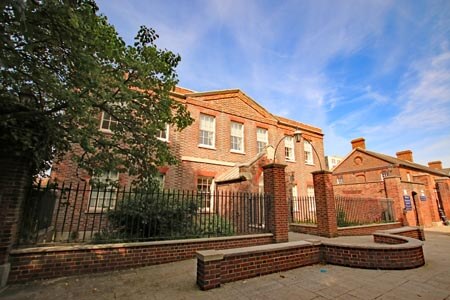
Norrish Central Library

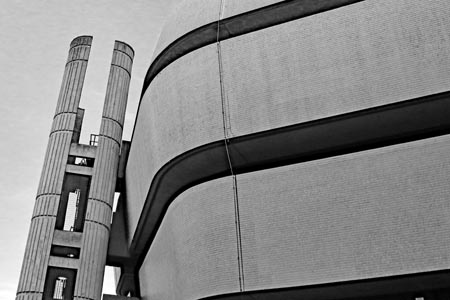
The Norrish Central Library in Portsmouth, located at Guildhall Square, is an example of post war brutalist architecture, characterised by its clean lines and functional design. It was completed in 1976, during a period of redevelopment following the extensive bombing that Portsmouth endured during World War II. The library is named after architect Ken Norrish head of the city's Architecture Dept, who designed the building, it was inspired by Frank Lloyd Wright’s Guggenheim Museum (1959) in New York. The building is a functional, concrete structure typical of 1970s public architecture, designed to prioritize space and accessibility for a wide range of community services.
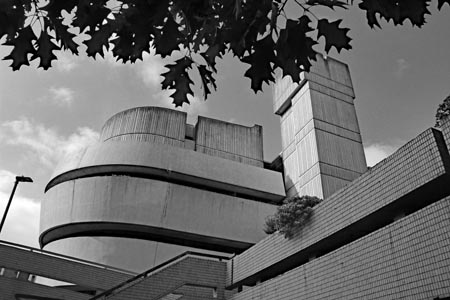
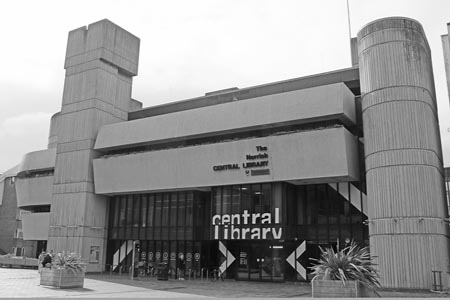
Ravelin Sports Centre
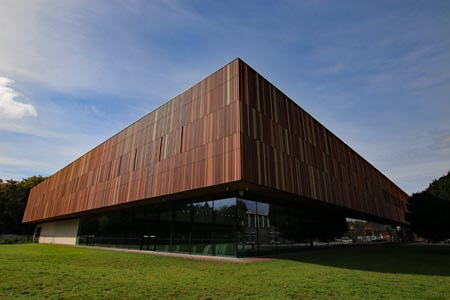

The Ravelin Sports Centre opened at the University of Portsmouth in 2022. It has been designed to be one of the most sustainable sports facilities in the UK. The building won the Public Sector Project: Design Stage Award at the BREEAM Awards in 2020.
Vice-Chancellor of the University of Portsmouth, Professor Graham Galbraith CBE said "This is a landmark building for the University and for the City of Portsmouth and will provide an amazing experience for everyone who uses it."
This stunning looking building generates renewable energy using roof mounted solar panels, incorporates internal heat recovery systems, swimming pool water is recycled for flushing the toilets and the building has a grassed roof designed to improve biodiversity.


Spinnaker Tower
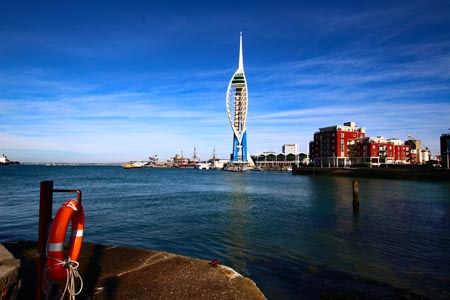

The Spinnaker Tower, Portsmouth which opened in October 2005, is situated on the edge of Portsmouth Harbour on the waterfront of the Gunwharf Quays Shopping development.
It is higher than the London Eye, Blackpool Tower and Big Ben and at 170m is one of the tallest publicly accessible structures in the UK, outside of London.
Work on the construction of the Spinnaker Tower began in November 2001 with a concrete dam built as protection of the site from the sea, then 84, 1m square piles were driven into the seabed that form the foundations for the tower.
The tower opened for business in October 2005, offering panoramic views across Portsmouth Harbour, across the Solent to the Isle of Wight and far beyond.The viewing distances on a clear day are up to 23 miles.

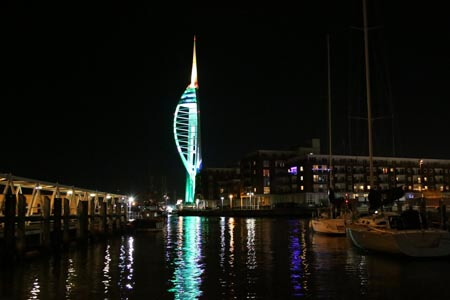
Square Tower

The Square Tower on the corner of Broad Street and the High Street in Old Portsmouth, is one of the oldest buildings in Portsmouth. Although it looks, well square, from the outside, the building has a suprisingly spacious and interesting interior.
The Square Tower was built in 1494 during the reign of Henry VII and was the residence of the military governor until the adaption of the Domus Dei as the Governors residence in about 1580.
The building has had a variety of uses throughout its long history, it was used as a magazine for storing ordanance and gunpowder, it was used as a meat store by the Admiralty and in 1823 the Admiralty mounted a semaphore station to the top of the tower to communicate with ships at sea.
Today it is a licenced wedding venue and is used to host a variety of other events such as live music and plays.

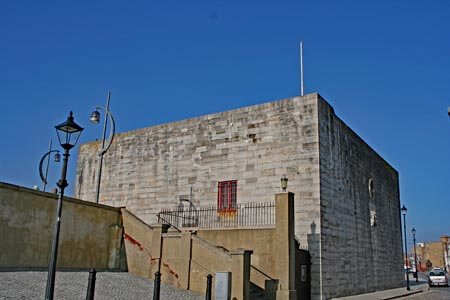
Treadgold & Co - Bishop Street, Portsea


The Treadgolds site at Bishop Street, Portsea, Portsmouth, comprises a collection of buildings that reflect its industrial heritage. Originally separate houses, these structures were later adapted to serve as an ironmonger's house, shop, warehouse, iron works, and stabling. The complex includes early 18th and late 18th-century houses, with additions and alterations from the early 19th century, such as the shop addition of 1849-50, office refurbishment, store and warehouse of 1863, stableyard of 1867, and forge and workshop of 1873-4. The buildings are primarily constructed of red brick in Flemish bond, with some featuring grey headers, and they exhibit a variety of roofing materials, including Welsh slate and plain tiles.
Treadgolds ceased trading in 1988 and was subsequently sold to Hampshire County Council. It operated as a museum from 1995 until 2003, when it closed due to safety and maintenance concerns. In 2013, ownership was transferred to the John Pounds Community Trust, which has since embarked on a project to restore and reimagine the historic buildings. The vision is to create new spaces where people can engage in activities that promote happiness and health through creativity and well-being. The Treadgolds Courtyard Garden is already operational, and the Trust has established a special meeting and well-being space in the adjoining Victorian warehouse, which received a RIBA South Award in 2022.
